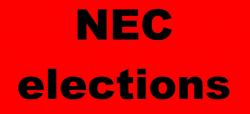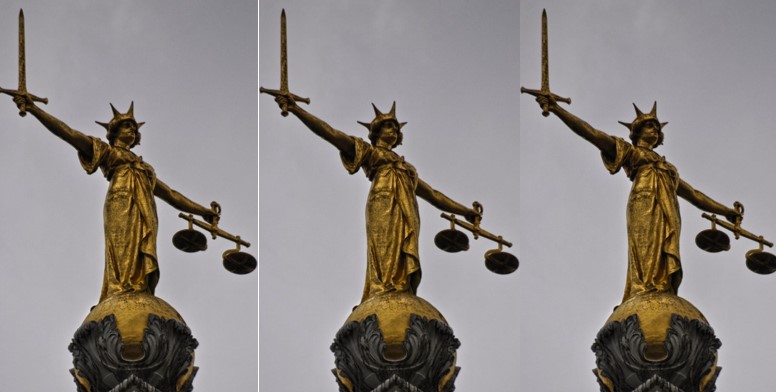The election results for Labour’s NEC have shown only a modest gain for the left, but in the context of what is a period of generalised advance for the right wing. There is no doubt that the right wing of the Party is still in the ascendant and that they are determined to demolish the radicalism of the last few years under Jeremy Corbyn.
The NEC results show a marked decline in the active membership of the party. According to the Party’s own figures of eligible votes, even in the six months since the leadership contest, Labour has lost nearly 57,000 members, more than one on ten of the total inherited by Starmer. In these elections, there were less than 130,000 votes cast, a turn-out of only 27 per cent, the lowest ever. This compares with over 400,000 votes cast in the leadership contest and the 293,000 cast – more than twice as many – in the NEC by-elections earlier this year.
Right wing wants a smaller, inactive membership
The right wing of the party, including those who supported Starmer’s leadership bid, is determined to reduce the party to a demoralised, inactive, and above all a much smaller Labour organisation. Judging by the results announced last Friday, therefore, we have to say that they have succeeded in this to some degree.
The exodus of members, understandably disgusted at the sacking of Rebecca Long-Bailey and then the suspension of Jeremy Corbyn, only helps the right to consolidate its control. The bureaucratic apparatus of the Labour Party simply does not have the means of expelling or suspending two or three hundred thousand radical members – much as they would like to – but they must be pleased with the result of their clamp-down on free speech since Corbyn’s suspension. Indeed, they are delighted that so many hard-working and active left members are leaving, because they are effectively self-expelling themselves.
Unprecedented frenzy of lies
The political establishment that represents the interests of British capitalism was appalled and seriously worried at the growth of the Labour Party under Jeremy Corbyn’s radical leadership. That explains the unprecedented frenzy of lies, slander and media distortion directed at Corbyn, one part of which was the campaign around grossly exaggerated claims of anti-Semitism.
In yet another attempt to placate the right wing, Corbyn now appears to be rowing back on the comments that led to his suspension. “To be clear” he says, “concerns about antisemitism are neither ‘exaggerated’ nor ‘overstated’. The point I wished to make was that the vast majority of Labour Party members were and remain committed anti-racists deeply opposed to antisemitism.” As it was in the past, however, appeals to the right-wing garner little reward. Corbyn may be reinstated himself, but in purging the party, the right wing, as always, will be far more ruthless than Corbyn or the left ever was.
“It’s not me they’re afraid of…”
But the crisis in the Labour Party does not begin and end with Corbyn personally. One of the truest comments that he ever made was at a mass rally, when referring to the media campaign against him. He pointed at the audience, saying, “It’s not me they’re afraid of…it’s you!”.
The right-wing of the Labour Party, oblivious to the day-to-day needs of working class people, but fully integrated into the social mores of the establishment, were prepared to even go to the lengths of actively sabotaging Labour’s 2017 election campaign from within, as we learned from the leaked Labour report on anti-Semitism.
Having got rid of Corbyn, the establishment are cock-a-hoop that one of ‘their own’ is now ensconced as Labour leader. Keir Starmer’s ‘ten pledges’, used to garner middle-of-the-road and even some left votes during the leadership contest – such as his pledge to “maintain our radical values” – are not worth the paper they are printed on. His leadership is now conducting an ongoing campaign to make the Labour Party once again a safe “second eleven” for capitalism.
Little point in boasting
As for the NEC, Jeremy Corbyn never had a majority of more than one in any crucial votes. Having taken over as leader, Starmer automatically had an in-built majority. There is little point in boasting, as Momentum is doing, that the Grassroot Voice slate is “thelargest single group in the member section” and describing this NEC result as a “major victory” for the left. It is good to have five out of nine left representatives in the CLP section, a left youth representative and a left representative in the disabled members’ section, but the composition of the NEC is still heavily weighted to favour the right and we have to acknowledge that.The NEC representatives from Wales, Scotland, Labour MPs, Labour councillors, and most trade unions all back the right wing and that has not been changed one jot by the recent elections.
The new STV voting system adopted by the NEC was designed to produce a proportional result and that is exactly what it gave. It is no accident that the Electoral Reform Society described Labour’s voting system as the “gold standard” for proportional representation. It is a complex and convoluted system, unfathomable in its inner workings to all but expert statisticians, in which ‘excess’ votes are passed ‘up’ or ‘down’ to other candidates, with different weightings attached to the re-distributed votes.
Active members still mostly on the left
What the elections to the CLP section do show, however, is that the active membership – judging as ‘active’ those who voted in this election – are still mostly on the left. The first preference votes for the Grassroots Alliance and Labour Left Alliance combined amount to 42 per cent, against 31 per cent for the openly right-wing slate. The so-called Tribune Group of candidates, are no more ‘left’ than the ‘Open Labour’ group, but by exploiting the name of a once significant left grouping in the Party, they have drawn away what ought to have been genuine left votes. If we include these as potential left votes, then the total left vote is over fifty thousand members, by no means an insignificant number. Neither have we not lost sight of the fact that over six thousand votes were not counted and there is a widespread assumption that most of these were from left members who voted and subsequently resigned.
For the left of the party there are two important lessons we need to take on board after the NEC elections. The first is that there needs to be a unified left slate in the next NEC elections in two years’ time. Proportionality means what it says: but if there were a single, unified left slate, there would be a genuine chance of not only holding on but increasing the votes of the left across the party.
The confusion and splits within the left were evident for all to see and the main responsibility for this lies with Grassroots Voice (GV), formerly the Centre-Left Grassroots Alliance, for their arrogant and undemocratic assumption of ‘leadership’, not to say a monopoly of the left. It is unacceptable for a handful of representatives of some (but not all) left groups in the Labour Party to meet in secret and decide on a slate of six – and then to announce to all and sundry that this was the slate for which we all had to vote. It was a perfect recipe for dissent and division on the left.
Secret deals must not happen again
Secretive meetings, discussing slates behind closed doors, will no longer be acceptable in the next NEC elections. This must never happen again. The largest organisation within Labour’s left is Momentum, probably followed in terms of declared support by the LLA and Jewish Voice for Labour. But whatever the ‘membership’ or support of organisations and currents on the left of the Labour Party, they all have the moral obligation and the right to be able to participate in some form of hustings with some form of ballot arising out of them.
A unified system of hustings and a ballot must be organised in the next year and a half, in time for the next NEC elections. There were many political question marks against some of those on the GV slate, and the only way members on the left can reasonably be expected to abide by a unified slate – which could potentially increase its support in the CLP section beyond the current five – is to have a slate that is determined by an open and democratic election based on political ideas and policies.
The second lesson is that activists need to pay more attention to the representatives of the trade unions on the NEC, thirteen in all. This section is dominated by the right wing and there is no doubt that many of them, with a few notable exceptions, will always vote with the right and, in effect, against the interests of their own members, just as they do at Labour Party conference. They are usually nominated to the NEC and conference by the union leadership and they are completely beyond the accountability of their membership.
Trade union tops face turmoil in the membership
But on the other hand, as the turmoil in Unison shows, their members in the coming months and years will be demanding policies and a lead in struggles to defend their interests. There is one general secretary position currently contested in Unison, with a rank-and-file candidate getting more support than any similar candidate for years. There may be similar elections in the next few years in Unite, the GMB and possibly USDAW, the three other large, affiliated unions.
With leftward-facing leaders in three of these four, instead of only one at present, the balance on the NEC would tip towards the left immediately. That scenario is far more likely than one in which the trade union tops enjoy years of cosy prosperity and harmony with right-wing Labour leaders. It is the responsibility of active socialists who are members of affiliated unions to demand that their union votes and influence are deployed in favour of socialist policies and democracy in the Party. We might add, although we will deal with it in a future editorial comment, that the general secretary election in Unison shows that unity on the left is just as essential in the trade union movement as it is in the Party.
A skirmish in a generalised retreat
In relation to the NEC elections, therefore, the left has only won a skirmish, in a situation of generalised retreat. But what the right wing do not realise, is that the balance of forces inside the party is not determined by their personal whims or ambitions, but fundamentally by events. There is no longer any ‘normal’, either in society or in politics. The threat to the living standards, health and well-being is real and it is unprecedented in modern times.
When the anger and opposition to the system works its way through into the political plane, when the anger of trade union members begins to create ferment inside those organisations, then the right wing will be left exposed in a tempest. In only six months, the balance of forces in the Labour Party has tipped dramatically in favour of the lite-Tories who have infiltrated our movement and they are doing their damnedest to create a party that suits their feeble ambitions. But that is for now. In the long run they will not succeed because they have nothing to offer. In the meantime, we need to stay and fight, and stand our ground as best we can.
November 17, 2020



